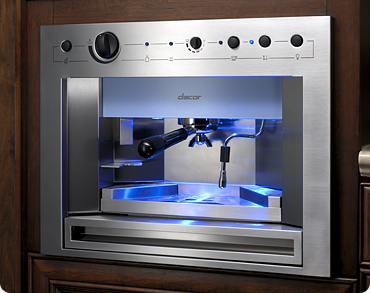Plumbed in Coffee Machines – Models, Pros and Cons Discussed
Coffee machines have come a far way from their humble beginnings. Thinking back to the original Bodum or Moka Pot design, to the fully automatic machines we are using now – we have a lot to be thankful for. We now have access to excellent, fresh and easily made coffee, without the need for nay “skill” to prepare it.
But what if you are in an office environment – or any “heavy traffic” environment for that matter – and find that refilling your coffee machine’s water reservoir is now becoming a nuisance more than a convenience? That’s when you should consider plumbing your machine in. Plumbed-in machines are connected directly to your main water supply, as opposed to relying on a limited literage reservoir to prepare your coffee drinks.
We discuss which of the main models of commercial coffee machines are able to be plumbed-in, as well as the pros and cons of plumbing your coffee machine in.
Which Coffee Machines Can Be Plumbed In?
The easiest way to spot a machine that can be plumbed-in is by its size. Typically, smaller machines such as the Saeco Minuto or any household capsule-style coffee machine will not have the facility to plumb the machine in, typically because the machine is simply not big enough to do so.
Larger coffee machine s- with the likes of vending coffee machines and larger commercial bean to cup automatic machines will almost certainly have this function available.
Manual –style coffee machines – those which require separate grinders and have panarello-style milk frothing wands are a grey area. The majority of these machines do not have an internal reservoir to start with, so they will intrinsically need to be plumbed in. However, other models only have an internal reservoir, and some have a reservoir as well as the ability to be plumbed-in.
We suggest opting for an automatic coffee machine, especially if the staff will be preparing their coffee by themselves – for the simple reason it is far easier to operate than a manual type of coffee machine.
Check your user manual, or check with your supplier if your machine can be plumbed in.
Plumbed in Coffee Machines: Pros and Cons
The biggest downfall to plumbing in your machine is the quality of the water being filtered through your machine, and the dangers of it. See, your plumbed-in machine will use municipal water – which is notorious for harbouring many chemicals and a very high amount of limescale-building elements. This means you will have to routinely carry out descale-cycle son the machine to prevent damage from limescale build-up. It also means your coffee’s taste may be affected, especially if the water has a high amount of chlorine.
Another major disadvantage is the need for a water filter to be fitted in your machine; this will require regular changing, as it will be filtering a lot of water with a lot of impurities.
Lastly, your machine will require fitment in an area where you have access to water mains – so if mobility is a concern to you – this is something to consider as well.
The benefits of plumbing in your coffee machine are quite clear; there is no need to refill your water tank at any stage – so no delays in getting your coffee. This can help reduce time spent waiting for coffee during limited lunch or tea breaks, and less of a cost on spending money on filtered water to use within the internal reservoir.
Keen to get your hands on a plumbed in coffee machine? Click here to get in touch with us today!
Cover Image Credit: appliancist.com
